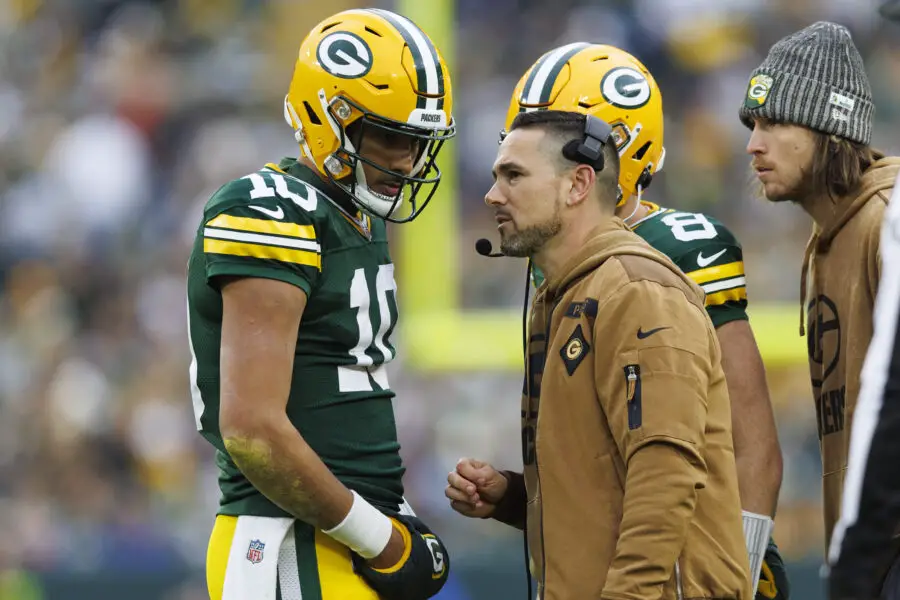Alas, fantasy football is, for all intents and purposes, over.
You’ll have to wait another 8 months before attending your annual draft party where you’ll overindulge on chips and salsa, vienna sausages and your drink(s) of choice. Another 8 months before you can talk as much trash to fellow league mates about how this is the year that elusive fantasy football championship finally enters your grasp. Another 8 months to put all of your off season research to work, set a lineup, add from the waiver wire, and make trades.
That is, unless you’re part of a Dynasty league.
Fantasy Football
The fantasy football world is a huge part of what makes the NFL brand such a powerhouse. It has brought in a whopping 7-plus billion dollars over the past couple of years. Throughout its lifetime, fantasy football has branched out and now thrives in a multitude of formats; anywhere from standard redraft leagues, to guillotine leagues, to best ball leagues, to vampire leagues, to daily fantasy lineups, and, of course, my personal favorite – the Dynasty league.
[pickup_prop id=”3830″]
It’s my hope to bring you on board the Dynasty train that is continually getting more crowded. I’m anxious to take some deep dives into a plethora of different topics, including ranks, player profiles, analytics and stats, off-season news, and the NFL draft, among many others, as it relates to Dynasty football.

With all of these grandiose ideas in mind, though, I wanted to build a foundation for any new readers that will absorb information I’ve written. Therefore, I’ve broken down a number of key concepts in relation to Dynasty fantasy football in a 4-part introduction series. This is Part 1 of 4. So if you’re looking to start a Dynasty league, join one, or just understand the concept of them, look no further.
WHAT CONSTITUTES A DYNASTY LEAGUE
There’s no denying the number of different ways a league can be set up and run. As a concept, Dynasty fantasy football’s scope is rather large. But in short, it’s a league where you get to keep all or most of your fantasy roster from year-to-year. So, when your league’s championship game ends after Week 16 (for most of you), there’s some great news…your season keeps going! These players are still on your active roster, so anything that happens to them in the offseason, will impact their value for the upcoming year.
WHAT IS THE PURPOSE OF A DYNASTY LEAGUE
One of my favorite Dynasty experts to read and follow is Ryan McDowell of My Fantasy League, and he states it nicely, saying, “A dynasty league…facilitates trades, including trading of draft picks, and it encourages a deeper roster pool, so young ‘project’ players can be identified and groomed.”
If you’re a football junkie, all of that sounds salivating. Trades can happen at any time throughout the year – unless otherwise specified by your commissioner. You can also trade draft picks, which are a premium to dynasty owners, and you’ll have to be familiar with not just veteran players, but rookies and up and coming college players as well. It truly feels like you are a GM, in charge of making decisions that will impact your team both in the short and long term.

REDRAFT LEAGUE
A lot of fantasy football owners stick with what they know, which is the industry-standard redraft leagues. This, normally, is for the casual football fan who, once the NFL season is over, doesn’t have the time or energy to keep up with much of the offseason news, free agency signings, NFL draft, training camps, etc. That’s not to say it is only for casual fans, there is still plenty of skill and strategy involved in this type of league. Every year, owners get a clean slate. Whether your team finished first or last in the previous fantasy season means nothing. To top it off, the availability of information for these types of leagues are generally just a click away for any owner scrambling to have a list of players ready to draft.
KEEPER LEAGUE
For owners looking to bring a bit of variety to their fake football world, a Keeper or Dynasty League is a good way to do such a thing. The difference between these two is fairly straight forward, really. A Keeper league is based around retaining anywhere from 2 to 4 players every year (sometimes more, depending on what the commissioner decides). An addendum to this is owners having to give up certain draft picks the following year in order to keep certain players. If one were to partake in this type of format, they’ll need to be fairly knowledgeable about offseason musings around the league so they know which players they should keep.
DYNASTY LEAGUE
Going yet another step further into the fantasy world would be the Dynasty league, which I will focus and emphasize on as much as possible in future articles. The Dynasty league is the closest that any of us would come to be an actual general manager of a team. Basically, you will retain most, if not all of your players each year. This makes the drafts particularly interesting, because knowledge of up and coming college players is a must, as well as knowing the value of draft picks in trades, short and long term projections of players, contracts players have with their current NFL team, and even down to player’s ages.

WHAT’S COMING?
Some of you may currently partake in a Dynasty league. Or maybe you’re unaware of what a Dynasty league consists of. Thinking of starting a brand new Dynasty league from the ground up? My hope is to help you in all of these areas, whether it’s this current article of defining what a Dynasty league is, Dynasty draft strategies, Dynasty rankings, and more. In Part 2 of the Dynasty League Intro series, it will consist of league size, roster size, and player positions. Look for it soon!
For more great content follow me on Twitter at @lilpeds and follow us at @WiscoHeroics1! To keep up with everything in Wisconsin sports, click here.









